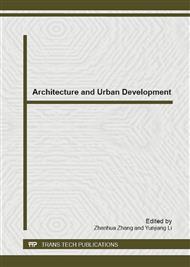p.603
p.608
p.612
p.618
p.622
p.627
p.631
p.635
p.640
Analysis of Phase-Change Gypsum Board Used on the Wall of Hot Summer and Cold Winter Regions
Abstract:
Use the effective heat capacity method model to simulate walls’ surface temperature such as peak value and volatility. Phase transition wall’s surface temperature is lower than the other’s(thermal mortar wall) in Nanjing. In addition, phase transition wall’s surface temperature volatility is smaller than thermal mortar wall’s. The mathematical model is verified by experiment. Phase transition wall improves the thermal comfort of room.
Info:
Periodical:
Pages:
622-626
Citation:
Online since:
November 2012
Authors:
Price:
Сopyright:
© 2012 Trans Tech Publications Ltd. All Rights Reserved
Share:
Citation:


